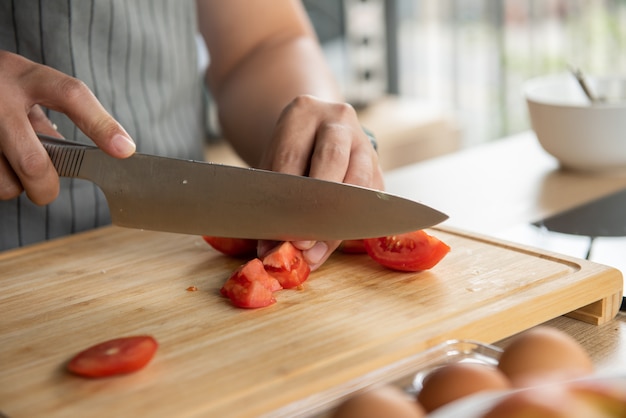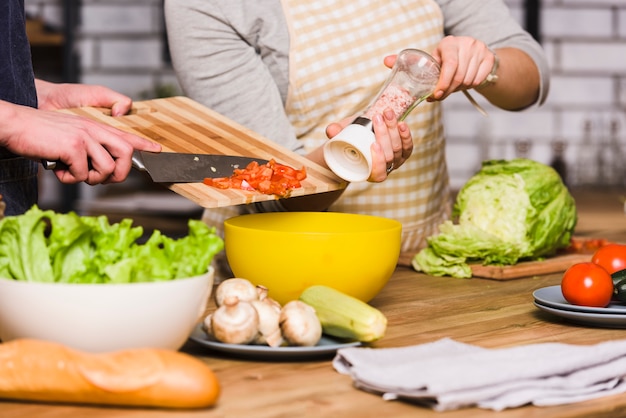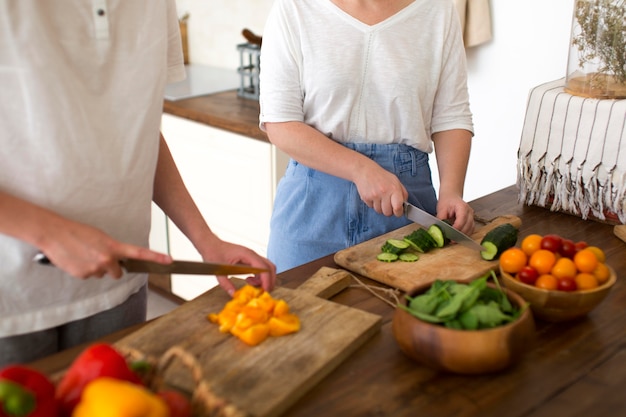Let's talk backstrap! It's a real hidden gem, isn't it? You don't see it on menus as often as a sirloin, but when cooked right, it's absolutely divine. Tender, juicy, full of flavour - it's a true treat. And that's what I'm here to help you with. I've been experimenting in the kitchen for years and have a load of tips and tricks to get the most out of this delicious cut of meat. So, grab a cuppa, settle in, and let's get cooking!
Part 1: What is Backstrap?

Okay, let's start with the basics. Backstrap, also known as "tenderloin," is a long, thin muscle that runs along the backbone of a deer or other game animal. It's incredibly lean, naturally tender, and known for its rich, gamey flavor. Backstrap is incredibly versatile. You can grill it, pan-fry it, roast it, even use it for stir-fries - the possibilities are endless.
The Backstrap's Unique Texture and Flavor
What makes backstrap so special is its unique texture and flavor. Because it's a muscle that's not heavily used by the animal, it's incredibly tender. The gamey flavor comes from the animal's diet and lifestyle, giving it a distinct, slightly wild taste that many find irresistible.
Finding the Perfect Backstrap
A good backstrap makes all the difference. You'll want to look for one that's bright red in color, free of any discolouration or bruising, and firm to the touch. A good butcher can tell you all about the animal it came from and how it was raised, giving you a sense of the flavor you can expect.
Preparing the Backstrap for Cooking
Once you have your beautiful backstrap, there are a few things to do before you start cooking.
- Trim the Silver Skin: This tough membrane can make your backstrap chewy, so it's best to remove it. You can do this with a sharp knife or by using a paper towel to help grip it. Just be careful not to cut into the meat itself.
- Seasoning: The key to a delicious backstrap is all in the seasoning. You can use your favourite herb and spice blend, but some of my go-to's include salt, pepper, garlic powder, paprika, and onion powder. You can also get adventurous and add things like dried rosemary, thyme, or even a pinch of chili flakes. Remember, it's always better to start with a light hand and add more seasoning as you go.
- Marinating: Marination isn't essential, but it can really add another dimension of flavour to the backstrap. My go-to marinade is a simple mixture of olive oil, lemon juice, garlic, and herbs. You can marinate for anywhere from 30 minutes to overnight.
Part 2: The Ultimate Guide to Grilling Backstrap

Right, grilling. It's a classic way to cook backstrap and delivers that incredible smoky flavour we all love. Here's how to make sure it comes out perfectly cooked.
Preparing the Grill for a perfect sear
First things first, get your grill HOT! A nice, roaring fire is essential for a good sear. You'll want it to be around medium-high heat, which is about 400-450°F (200-230°C). If you're using a gas grill, heat those burners up to high. If you're using a charcoal grill, light the coals and let them burn until they are covered in a layer of white ash.
Grilling Backstrap to Perfection: Step by Step
Once the grill is hot, you're ready to start cooking. Here are my top tips for a perfectly grilled backstrap:
- Sear it First: A good sear is crucial for getting those delicious grill marks and locking in the juices. Grill the backstrap for about 2-3 minutes on each side. You'll know it's ready when you see those beautiful brown marks.
- Cook It Through: After searing, reduce the heat to medium and continue cooking for another 5-7 minutes per side, or until it reaches an internal temperature of 145°F (63°C). Remember, backstrap is lean, so it doesn't take long to cook.
- Rest It: Once it's cooked, take the backstrap off the grill and let it rest for 5-10 minutes before slicing. This allows the juices to redistribute, making for a more tender and flavorful piece of meat.
The Importance of Doneness: Avoiding Overcooked Backstrap
One of the most common mistakes people make when cooking backstrap is overcooking it. Overcooked backstrap can become dry and tough, so it's important to keep a close eye on it and make sure it doesn't spend too long on the grill. You can check the doneness by inserting a meat thermometer into the thickest part of the backstrap. If you don't have a meat thermometer, you can also check the doneness by pressing on the backstrap: if it feels firm and springs back, it's cooked through.
Part 3: Pan-Frying Backstrap: A Quick and Easy Option

Okay, so you don't have a grill? No problem. Pan-frying is a quick and easy way to cook backstrap and delivers a delicious, crispy crust.
Getting Your Pan Hot and Ready
The first step is to heat a heavy-bottomed pan over medium-high heat. Cast iron is ideal, but a good quality stainless steel pan will do the trick.
Cooking Backstrap in a Pan: Tips for Success
Once the pan is hot, add a little oil. I love using olive oil, but you can use vegetable oil or even butter. Add the backstrap to the hot pan and cook for 3-4 minutes on each side, or until it's browned and cooked to your liking.
Don't Be Afraid to Move It Around!
Don't be afraid to move the backstrap around in the pan. This ensures that it cooks evenly and develops a nice crust. You can also add some butter to the pan towards the end of cooking for an extra layer of flavor and richness.
Part 4: Roasting Backstrap: For a Show-Stopping Meal
You're having guests over and want to impress? Roasting is the way to go! It's a bit more involved than grilling or pan-frying, but the results are truly spectacular.
Preheat the Oven for a perfect roast
The first step is to preheat your oven to 375°F (190°C). You'll want the oven nice and hot to create a crispy exterior while keeping the inside juicy and tender.
Seasoning and Roasting Backstrap
Season your backstrap liberally with salt, pepper, and any other herbs or spices you like. Place the backstrap in a roasting pan and roast for 15-20 minutes, or until it reaches an internal temperature of 145°F (63°C).
Basting for Extra Juiciness
While it's roasting, you can baste the backstrap with a little bit of butter, olive oil, or even a pan sauce. This will help keep it moist and add extra flavor.
Resting the Backstrap for Enhanced Tenderness
Once it's cooked, remove the backstrap from the oven and let it rest for 10-15 minutes before slicing. This allows the juices to redistribute, resulting in a more tender and flavorful dish.
Part 5: Serving Up Your Delicious Backstrap
Right, you've cooked your backstrap, it's rested, and now it's time to serve it up. There are endless possibilities here, so let your creativity run wild!
Classic Sides for a Traditional Meal
A few classic sides that pair beautifully with backstrap include:
- mashed potatoes: Creamy and comforting, mashed potatoes are a perfect accompaniment to any backstrap dish.
- Roasted Vegetables: Roasted vegetables like carrots, broccoli, or Brussels sprouts add a touch of sweetness and a lovely crunch to the meal.
- Wild rice pilaf: A flavorful and nutty pilaf adds a touch of sophistication to your meal.
More Adventurous side dish Ideas
For a more adventurous meal, try some of these exciting side dishes:
- Polenta: Creamy and versatile, polenta is a great way to add a touch of Italian flair to your meal.
- Mushroom Risotto: A rich and creamy risotto is a perfect complement to the savory flavor of backstrap.
- Green bean salad: A fresh and vibrant salad adds a refreshing contrast to the richness of the backstrap.
The Importance of Sauce: Elevating Your Backstrap Dish
A delicious sauce can really take your backstrap dish to the next level. Here are a few ideas:
- Mushroom Sauce: A rich and earthy sauce made with sautéed mushrooms, shallots, and red wine.
- Cranberry Sauce: A sweet and tangy sauce that pairs beautifully with the gamey flavour of backstrap.
- Peppercorn Sauce: A spicy and bold sauce that adds a touch of heat to the dish.
Creative Sauce Combinations
Don't be afraid to experiment with different sauce combinations. For example, try adding a touch of balsamic vinegar to your mushroom sauce for a hint of sweetness or a splash of Dijon mustard to your cranberry sauce for a bit of tang. You can even get creative and use a combination of sauces. For example, try serving your backstrap with a combination of mushroom sauce and cranberry sauce for a sweet and savory flavor combination.
Part 6: Backstrap Leftovers: Delicious Second Meals
You cooked a bit too much backstrap? Don't worry! There are plenty of delicious ways to use up leftovers.
Backstrap Salad for a Light and Refreshing Meal
Slice the backstrap into thin strips and add it to a salad with your favourite greens, vegetables, and dressing. You can also add some toasted nuts or seeds for extra texture and flavour.
Backstrap Sandwiches for a Hearty Lunch
Use the leftover backstrap to make delicious sandwiches on crusty bread. Add a little cheese, some lettuce, and your favourite sauce. You can also add other toppings, such as tomato, onion, or pickles, to your sandwich.
Backstrap Stir-Fry for a Quick and Easy Dinner
Slice the backstrap into thin strips and add it to a stir-fry with your favourite vegetables and sauce. You can also add other ingredients, such as rice noodles, tofu, or tempeh, to your stir-fry.
Part 7: Tips for Success: Mastering the Art of Cooking Backstrap
After years of cooking backstrap, I've learned a few things along the way. Here are my top tips for success:
- Don't Overcook It: Backstrap is lean and cooks quickly. Overcooking can make it dry and tough.
- Rest It: Letting the backstrap rest after cooking allows the juices to redistribute, resulting in a more tender and flavorful dish.
- Experiment with Flavours: Don't be afraid to experiment with different seasonings, marinades, and sauces.
- Use a Meat Thermometer: A meat thermometer is the best way to ensure that the backstrap is cooked to your liking.
- Don't Be Afraid to Ask for Help: If you're not sure about anything, don't hesitate to ask your butcher or a trusted friend or family member for advice.
Part 8: Backstrap and Wine Pairings
What's a delicious meal without a nice glass of wine to go with it? Here are a few suggestions for pairing backstrap with wine:
Red Wines:
| Wine | Tasting Notes | Pairing Tips |
|---|---|---|
| Pinot Noir | Light-bodied, fruity, and earthy | Pairs well with grilled backstrap with a simple seasoning of salt and pepper. |
| Syrah | Bold, spicy, and peppery | Complements the gamey flavor of backstrap and works well with roasted or pan-fried dishes. |
| Merlot | Medium-bodied, smooth, and elegant | A versatile choice that pairs well with a variety of backstrap preparations, especially those with a cranberry sauce. |
White Wines:
| Wine | Tasting Notes | Pairing Tips |
|---|---|---|
| Chardonnay | Full-bodied, buttery, and oaky | Pairs well with roasted backstrap with a creamy sauce. |
| Sauvignon Blanc | Crisp, refreshing, and citrusy | A nice contrast to the richness of backstrap, especially when served with a green bean salad. |
Matching Wine to Your Dish: A Few Tips
When choosing a wine to pair with backstrap, consider the cooking method, seasoning, and sauce you've used. If you've grilled the backstrap with a simple seasoning, a light-bodied red wine like Pinot Noir would be a good choice. If you've roasted the backstrap with a rich sauce, a full-bodied red wine like Syrah or Merlot would be a better option. And if you're serving the backstrap with a green bean salad, a crisp white wine like Sauvignon Blanc would be a refreshing choice.
Part 9: FAQs
I know you might have a few questions about cooking backstrap. Here are some of the most common ones and my answers:
- What is the best way to cook backstrap? There's no one "best" way to cook backstrap. It all depends on your personal preference. Grilling, pan-frying, and roasting are all great options.
- How long should I cook backstrap? The cooking time for backstrap will vary depending on the method you choose. Grilling typically takes around 10-15 minutes, pan-frying takes 5-7 minutes, and roasting takes 15-20 minutes.
- What is the best temperature to cook backstrap to? The ideal internal temperature for backstrap is 145°F (63°C). This ensures that the meat is cooked through but still juicy and tender.
- What are some good sauces to serve with backstrap? Mushroom sauce, cranberry sauce, and peppercorn sauce are all great options. You can also get creative and try your own sauce recipes.
- What are some good side dishes to serve with backstrap? Mashed potatoes, roasted vegetables, wild rice pilaf, polenta, mushroom risotto, and green bean salad are all great options.
I hope this guide has been helpful and has inspired you to try cooking backstrap. It's truly a delicious and versatile cut of meat that is sure to impress. Happy cooking!
Everyone is watching

Perfect Rice Every Time: The Ultimate Guide to Cooking Rice
Cooking TipsAs a self-proclaimed foodie, I've always been a bit obsessed with rice. It's the foundation of countless cuisi...

The Ultimate Guide to Cooking Asparagus: Tips, Techniques, and Recipes
Cooking TipsAsparagus. The mere mention of this spring delicacy conjures up images of vibrant green spears, crisp and burs...

Ultimate Guide to Cooking the Perfect Thanksgiving Turkey
Cooking TipsThanksgiving. Just the word conjures up images of overflowing tables laden with delicious food, the scent of r...

Prime Rib Roast Cooking Time Chart: Per Pound Guide
Cooking TipsPrime rib roast. Just the name conjures images of lavish dinners, crackling fires, and hearty laughter. It’s ...

Can You Cook Spaghetti with Gasoline? (The Shocking Truth)
Cooking TipsWe've all seen those crazy internet trends. You know, the ones that make you wonder, "Did someone actually try...
